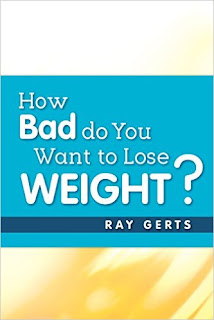I made a typo when I first published this post back in May, so I'm making the changes and publishing it again. Sorry for my bad editing.
When you see someone smoking, you might question “Why would you do that to yourself when you know it could kill you?” Do you react the same way when you know someone doesn’t exercise? You should.
When you see someone smoking, you might question “Why would you do that to yourself when you know it could kill you?” Do you react the same way when you know someone doesn’t exercise? You should.
You can always spot someone who doesn't exercise, has a bad diet, and has some health issues. It's usually obvious and most of the time it's from inactivity and eating the wrong foods. Inactivity is usually because of a busy lifestyle and eating the wrong foods is generally from eating in restaurants and too much snacking on the wrong foods or drinking the wrong drinks.
When I was at a recent fitness seminar, one of the presenters reminded the audience that research has shown physical inactivity to be as deadly as smoking. I was shocked at this when I first heard it a couple of years ago, but I think I was just as shocked hearing it the second time. My guess is you are too. It’s hard to imagine being inactive could be comparable to smoking, but it is.
You wouldn’t dream of smoking (and if you do smoke, you’re likely trying to quit), so why poison yourself with inactivity? But many of us do. Nearly 80% of us don’t get the recommended amount of exercise. Many experts agree the inactivity epidemic is more concerning than the obesity epidemic. Obesity is just a result of inactivity and an unhealthy diet.
The benefits of exercise are numerous and irrefutable. It helps prevent heart disease, diabetes, breast and colon cancer, dementia, depression, and more. If you exercise, chances are you’ll live a longer, healthier life, period.
What’s so powerful about exercise? Take heart disease, for example. Heart disease is associated with inflammation in the body. Exercise is a natural inflammation fighter. When you move, your muscles send out anti-inflammatory chemicals.
Also, every time you get up and move, your blood sugar, cholesterol, and triglycerides improve. When you sit down, they get worse. It’s just about moving more. High blood sugar levels will keep you from losing fat. No matter how healthy your diet and how much you exercise, high blood sugar will keep you from losing fat.
If you’re not active now, I’m sure it sounds overwhelming to start an exercise program. The good news is you can see health benefits with even a small amount of activity. Even taking a daily 5-minute walk around the office will improve your health. Slowly build up from there. Some health improvement are small and you can't notice them, but I think you can see the results of not being active over time.
Ultimately, you want your goal to be 30 minutes more, at least 5 days a week, of moderate exercise. We’re talking about a brisk walk– hard enough that you can talk comfortably but not able to sing. But take your time getting there. Throw in resistance exercises a couple of days a week, and you’re on track.
If you’ve tried exercise before and didn’t lose weight, don’t be discouraged. You are still getting health benefits even if you’re not shedding weight. If you’re overweight but active and fit, you can expect to live as long and healthy as someone who is normal weight and fit. Even if you’re obese, being active helps you live a longer, healthier life than a normal weight person who isn’t active. Losing body fat is about eating fresh, healthy foods. You can exercise and not lose weight and you will become a healthier person, but to lose fat you have to change your diet.
Think you’re too old for it to matter? Hardly. Regardless of your age, getting active has enormous benefits even in your 80s and beyond. We’re not just talking about living longer, but living better with a higher quality of life.
As British-American anthropologist, Ashley Montagu once said, “The idea is to die young as late as possible.”
I write about losing weight, how to lose weight, what foods to eat when you're trying to lose weight and exercise that will help you lose weight.
I wrote an ebook that will give you all the info in one read. It's a how-to book that also tells you about the mistakes I made and how to avoid them.
My ebook is available at www.amazon.com, www.B&N.com, iBooks (download the app), kobo.com, scribd.com and many more. My ebook will go on sale for $1.99. This special will only last for a limited time.







